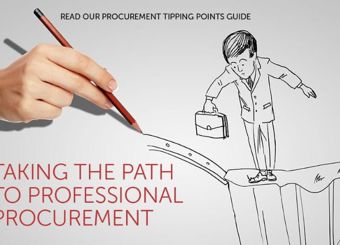Cooking the Books: History's Most Famous Accounting Scandals
The expression "cooking the books" refers to the fraudulent activities of corporations with regard to their financial statements - specifically, manipulating their financial data to report nonexistent earnings. Common ways to cook the books include expense delays, revenue acceleration, off-balance sheet items, and nonrecurring expenses. Most corporations are honest and recognize that Wall Street would be a ghost town if everyone committed fraud. Others try to get away with it, as evidenced by some of the most famous accounting scandals throughout history.
The 2001 Enron accounting scandal
When people mention an accounting scandal, often the Enron scandal and bankruptcy of 2001 come to mind. It was one of the most highly publicized scandals in accounting history. The big players in the scandal were CEO Jeff Skilling and CEO Ken Lay. The duo decided to keep big debts off the balance sheet. As the stock prices soared, suspicions increased. Ultimately, internal whistleblower Sherron Watkins caught the culprits. Employees lost their jobs, many investors and employees lost their retirement accounts, and shareholders lost $74 billion. Arthur Andersen was found guilty of manipulating Enron's accounts. Skilling got 24 years in jail, and Lay died before serving any prison time.
The 2002 WorldCom accounting scandal
Just one year after Enron made headlines, people found out about the WorldCom Scandal of 2002. Telecommunications company WorldCom is now known as MCI, Inc. CEO at that time, Bernie Ebbers, inflated revenues with false accounting entries and under-reported line costs. The company's internal auditing department uncovered a significant $3.8 billion in fraud. Assets were inflated by up to $11 billion, leading to 30,000 lost jobs. And investors lost about $180 billion. The CFO was fired, and the controller resigned. Ebbers got 25 years in prison based on charges of fraud, filing false documents, and conspiracy. Weeks after these renowned and costly scandals, the United States Congress passed the Sarbanes-Oxley Act, the most detailed set of business regulations since the 1930s.
The 2008 Lehman Brothers accounting scandal
In 2008, the world discovered the Lehman Brothers, a global financial services firm, hid more than $50 billion in loans. The key players were Lehman executives and auditors, Ernst & Young. After acquiring mortgage lenders between 2003 and 2004, they began disguising the loans as sales. Word is they also sold toxic assets to financial institutes in the Cayman Islands and indicated they would buy them back in the future. This action created the facade the corporation has more cash and less toxic assets than it did. Ultimately, the company was forced into the largest bankruptcy in United States history that escalated the 2008 crisis and contributed to the erosion of nearly $10 trillion in market capitalization across the world. However, SEC did not prosecute anyone due to a lack of evidence.
The 2008 Bernie Madoff accounting scandal
The Bernie Madoff scandal was another famous accounting scandal in 2008. This highly publicized scandal focused on the Wall Street investment firm founded by Madoff, Bernard L. Madoff Investment Securities LLC. Investors were duped out of $64.8 billion in the most massive Ponzi scheme in history. The top players in this scandal were Madoff, his accountant David Friehling, and Frank DiPascalli. The company paid returns to investors out of their own money or money from other investors rather than from profits. Ironically, Madoff was caught when he told his sons about his scam, and they reported him to the SEC. Madoff was arrested the next day and faced 150 years in jail with $170 billion restitution. Friehling and DiPascalli also got jail time. Many recall 2008 marked the U.S. financial collapse, making this a notable year in accounting history.
The 2011 Olympus accounting scandal
The Olympus scandal of 2011 was one of the biggest accounting scandals of the decade. The length of the fraud is what astounded everyone about this well-known international camera corporation. Michael Woodford, the company British chief executive, blew the whistle on inexplicable fees paid during acquisitions. The fraud totaled $1.7 billion. It was discovered the previous corporate management had buried losses since the 1990s. Acquisitions were used to cover up losses on poor investments, and the corporation had been deferring losses for over two decades. Former chairman Tsuyoshi Kikukawa, and two other executives received suspended prison sentences and one of the company advisers went to jail for four years.
For decades, it was challenging to bring accounting scandals to light. In 1939, Kenneth McNeal wrote, “Trust in Accounting,” which evidences the poor accounting procedures of those times. In the 1960s and 1970s, various scandals arose but attracted little attention. By the new millennium, fraudsters became overconfident, got caught, and faced severe penalties.
Here’s how you can avoid cooking the books
So what is cooking the books today and how can it be avoided? Accounts payable automation permits little room for error and manipulation. Fraud is detected quickly to address problems before they become costly accounting scandals. An automated AP system and an honest team ensure corporations remain truthful and act with the highest level of integrity. And this helps boost the bottom line for everyone.





